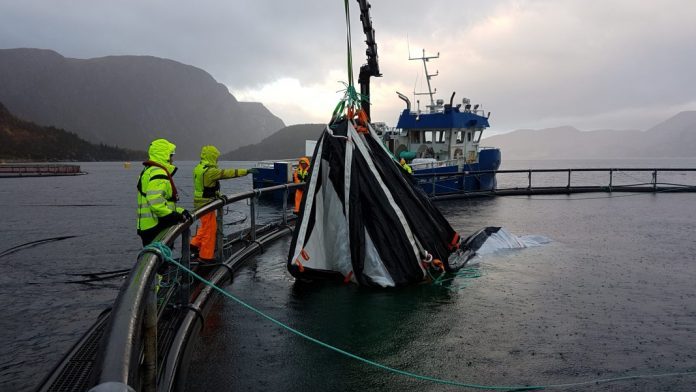But their effectiveness could be lower, according to new research on about sea lice management measures used on Scottish salmon farms.
In a press release, a Scottish Government-funded research led by Scotland’s Rural College (SRUC), together with the Norwegian Veterinary Institute in Oslo and the University of Strathclyde, has found the use of in-feed and skirts to prevent the parasites entering pens are the most cost-effective.
The aim of the project was to gather information about the sea lice management measures used on Scottish salmon farms and compare the “relative cost-effectiveness of these from both economic and specific environmental viewpoints.”
The researchers used in-depth interviews and workshops with stakeholders to assess the relative cost-effectiveness of sea lice management measures and their impact on the economic performance of the Scottish farmed salmon industry.
“The quantitative findings of the research indicate that in-feed and long-term usage of skirts – sheets of material mounted around the top portion of salmon pens to prevent sea lice from entering – have the highest relative cost-effectiveness,” the study found.
“Qualitative findings based on stakeholders’ perceptions indicate the skirts’ relatively low impact on the environment and fish welfare also translate into positive messages at the retail end of the supply chain,” it added.
However, skirts are perceived to reduce oxygen flow and may have a detrimental effect on fish with compromised respiratory functions, meaning their effectiveness could be low.
Cleaner fish, fresh water, physical removal measures and licensed veterinary medicines are among the second most cost-effective measures, but have “mixed and at times contradictory environmental, health and welfare impacts”.
The use of hydrogen peroxide, in both well-boat and tarpaulin bath treatments, represented the least cost-effective measures and based on stakeholders’ opinions, were regarded less positively by the public in view of their fish welfare and environmental aspects, and human health implications.
Lead researcher Luiza Toma said: “The findings indicate the complexity of sea lice control not only on-farm but beyond farmgate, and the need to address it as a holistic challenge.
“To create a quantitatively driven ranking, the study compared individual methods. However, there is no individual method that achieves the desired level of no or very low numbers of sea lice across a production cycle.
“For this reason, farm managers can and do use the wide range of methods available to them, which may include those lower ranked overall, as necessary to build the optimal sea lice management strategy.”
She added that with additional primary data, the analysis “could be improved to include the methodological integration of economic, biological and epidemiological modelling.”


